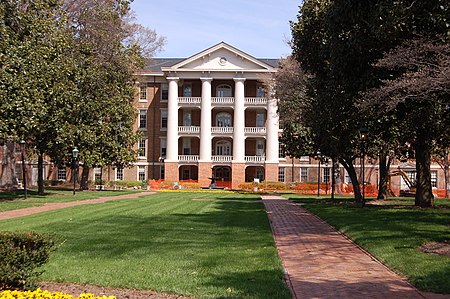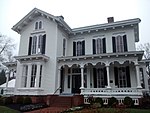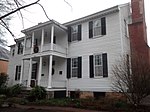Peace College Main Building
American Civil War hospitalsBuildings and structures in Raleigh, North CarolinaGreek Revival architecture in North CarolinaNational Register of Historic Places in Raleigh, North CarolinaSchool buildings completed in 1862 ... and 2 more
University and college academic buildings in the United StatesUniversity and college buildings on the National Register of Historic Places in North Carolina

Peace College Main Building is the focal point of the Peace College campus in Raleigh, North Carolina. Built between 1859 and 1862, Main Building is located at the northern end of Wilmington Street in downtown Raleigh and is considered one of the largest antebellum buildings surviving in the city. During its early history, Main Building was used as a military hospital and offices for the Freedmen's Bureau. The building now contains offices, parlors, banquet rooms, and dormitory residences. Main Building was listed on the National Register of Historic Places in 1973 and is a designated Raleigh Historic Landmark.
Excerpt from the Wikipedia article Peace College Main Building (License: CC BY-SA 3.0, Authors, Images).Peace College Main Building
North Blount Street, Raleigh Seaboard Station
Geographical coordinates (GPS) Address Nearby Places Show on map
Geographical coordinates (GPS)
| Latitude | Longitude |
|---|---|
| N 35.7891 ° | E -78.6377 ° |
Address
William Peace University
North Blount Street
27601 Raleigh, Seaboard Station
North Carolina, United States
Open on Google Maps










